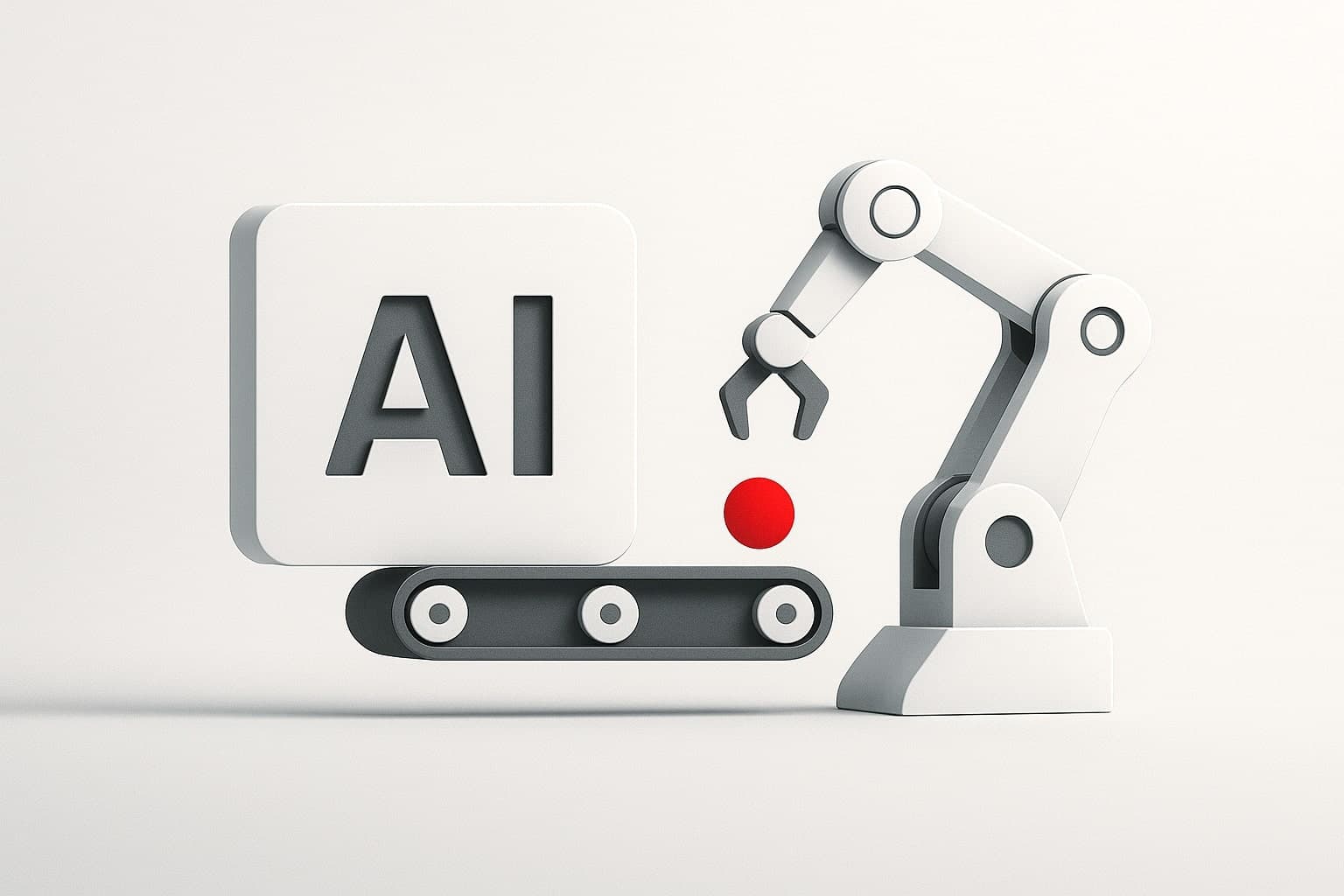October 16, 2025
Manufacturing

In manufacturing, even a few hours of downtime can mean millions lost. So when business leaders hear about AI transformation, the first reaction is often hesitation — “We can’t afford to stop production to test new technology.”
But here’s the truth: adopting AI in manufacturing doesn’t have to disrupt operations. In fact, when done strategically, AI can enhance existing workflows, optimize efficiency, and reduce downtime — all while keeping production running smoothly.
This guide walks you through how manufacturers can begin their AI journey step-by-step, ensuring innovation happens without interruption.
AI is reshaping how manufacturers operate — from the factory floor to supply chain management.
Common AI applications in manufacturing include:
Predictive maintenance: Identifying potential equipment failures before they occur.
Quality control: Using computer vision to detect defects in real-time.
Production optimization: Adjusting machine parameters dynamically for maximum efficiency.
Supply chain analytics: Predicting demand, optimizing logistics, and managing inventory intelligently.
However, the key to success isn’t implementing everything at once — it’s about integrating AI incrementally into your existing systems.
Why it matters:
A common mistake manufacturers make is trying to “AI-transform” everything at once. Instead, begin with a low-risk, high-impact pilot.
How to do it:
Identify bottlenecks or inefficiencies that can be improved with data.
Choose a process that doesn’t affect core production if something goes wrong.
Set clear KPIs — e.g., reduce machine downtime by 10% or improve defect detection by 5%.
Example:
A mid-sized automotive parts manufacturer started with a predictive maintenance AI pilot on just two CNC machines. Within three months, they reduced unplanned downtime by 22% — without altering any production schedules.
💡 Pro Tip: Choose a pilot that demonstrates quick ROI to build trust and internal buy-in before scaling.
Many manufacturers delay AI projects thinking their data isn’t clean or organized enough. The reality? You can start small with what you have.
Practical Approach:
Begin with machine-level data (temperature, vibration, power usage, etc.).
Use data cleaning and preprocessing tools to structure existing data.
Partner with AI providers that specialize in handling noisy or incomplete datasets.
Example:
A plastics manufacturer used existing sensor data from old machines to train a simple anomaly detection model. Even with limited data, the AI flagged irregular vibration patterns early — preventing costly machine failures.
Why modularity matters:
Traditional IT upgrades can bring production to a halt. AI tools that are modular and integration-friendly allow you to add capabilities without replacing existing systems.
Recommended Tools & Approaches:
AI-based APIs for predictive analytics that plug into ERP or MES systems.
Computer vision modules that attach to cameras already used for inspection.
Digital twins for simulating production changes before real-world implementation.
Example:
A beverage manufacturing plant integrated an AI-driven quality inspection API into their existing camera system. The upgrade took less than a day — yet improved defect detection accuracy by 18%.
⚙️ Pro Tip: Always ensure new AI systems can integrate with your existing PLC, SCADA, and ERP systems to avoid operational friction.
One of the biggest hidden costs of AI implementation isn’t technical — it’s human resistance.
How to Avoid It:
Involve machine operators and line supervisors from day one.
Show them how AI simplifies their tasks instead of replacing them.
Provide quick, hands-on training sessions focused on using AI tools effectively.
Mini Case Study:
A textile factory implementing AI defect detection trained floor staff to review AI results. Once operators saw how AI reduced their workload and error rates, adoption jumped to 95% within weeks.
Manufacturers often underestimate the complexity of AI deployment — from data handling to model retraining and cybersecurity. Partnering with experts helps avoid costly missteps.
Look for partners who:
Understand industrial processes and manufacturing systems.
Offer custom AI models tailored to your production line.
Provide on-site or hybrid integration without disrupting daily operations.
Ensure compliance with data privacy and safety standards.
Example:
A medical device manufacturer collaborated with an AI solutions firm to deploy vision-based defect detection in clean rooms. The system was integrated in phases during off-hours — ensuring zero downtime.
After a successful pilot, move toward scaling gradually across departments or plants.
Key Considerations:
Continuously track ROI metrics — downtime, output, quality improvements.
Retrain models periodically with new data to maintain accuracy.
Expand into AI-driven demand forecasting or automated process control once the foundation is stable.
Example:
A chemical manufacturing company rolled out AI-driven energy optimization plant-wide after seeing 14% power cost savings during a pilot test.
📊 Insight: Incremental scaling reduces risk and ensures the AI solution fits your unique workflows before full deployment.
AI adoption in manufacturing isn’t about tearing down existing systems — it’s about enhancing what’s already working.
By starting small, integrating modular AI tools, and building workforce confidence, manufacturers can accelerate digital transformation without ever stopping the production line.
If you’re ready to explore how AI can streamline your manufacturing operations without downtime or disruption, MLab Innovations can help design a custom roadmap — from pilot to full-scale deployment.
👉 Let’s make your factory smarter, safer, and more efficient — step by step.
No related articles found.